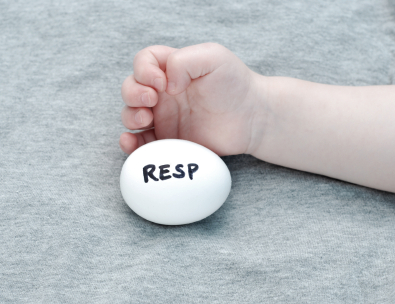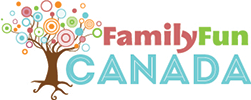
Maybe it’s the fact that you’re still paying off your own student debt that makes you so determined to save for your child’s education, or perhaps you want your kids to have more choice over where they attend school. Whatever your reason, you’ve probably decided to at least examine your options in saving for the future educational needs of your kids.
According to the 2004-2005 Guide to University Costs in Canada issued by USC Family Education Savings Plans Inc., a four-year degree at a Canadian university will cost nearly $67,000 by 2022. Incidental expenses, such as local travel, entertainment, phone, cable, utilities and household incidentals are included, at an estimated cost of $2,324 annually. Remove that from the equation and a student attending university and living at home will face a tuition and books bill of about $57,000 in 2022. Some estimates put a four-year program even higher, closer to $90,000 annually.
Will tuition really be that high? It could be. Yet, when I look at basic tuition from my university days, I paid just under $4,000 a year for basic tuition. At the same school, it’s now just under $5,000. In ten years, it’s only gone up by $1,000. That’s a 25% jump, but over a ten year period. Annually, the increase is just 2.5%. I wonder if the jump will really be as high as they say. For our family savings calculations, we’re going to assume basic tuition for my kids will likely come in around $6,500 a year – or $26,000 for a four-year program.
Those are still frightening numbers, whether you have just one child or a whole hockey line. Though it would be nice if we could guarantee every one of our children a four-year university program free of charge, there are many factors to consider that make your individual family savings needs different.
Deciding how much to save for your children’s education is like deciding how much to save for retirement; it’s more art than science. Obviously you can’t know in advance if your child will go to university, college or a technical school. Were they go to school counts too, because tuition varies wildly in schools across Canada. There are also living expenses to consider if your child decides to attend an out-of-town school, and those expenses vary from city to city and province to province.
Your own beliefs about education will come into play as well. In my first book, Sink or Swim: Get Your Degree Without Drowning in Debt (Dundurn, 2003), I recounted how I had very little financial assistance from my parents and still managed to graduate with almost no debt. In hindsight, I see that my struggles to balance school, work, and play were character-building and, in the end, were beneficial to my career as well. I’d like my children to struggle somewhat as well, but I’d also hate to see them deny themselves a good education because it’s all too difficult.
Without knowing how much they’ll need, what percentage you’ll want to cover, and how the investment will perform, it’s difficult to say how much money you should save every month. It may be better to consider how much you can afford to contribute, and how the government’s contributions will affect the balance.
Yes, there are government contributions! A lot of people have heard about Registered Education Savings Programs (RESPs), but few understand how they work, and even fewer understand the benefits and pitfalls associated with them.
According to a 2005 poll commissioned by Investors Group to better understand investors’ financial behaviour, almost half of Canadian parents have not saved enough to send their children to university for even one year. And 51% have not set up Registered Education Savings Plans for their children. According to the poll, even the parents who had set up a plan were often not making the most of them: 45% said they’ve saved less than $10,000 in RESPs.
So what exactly is an RESP? It’s essentially a savings plan the government has created to help you help your children with their post-secondary education. When you contribute to the plan, the government kicks in 20% on top.
You can invest up to $50,000 per child in an RESP. There are no annual limits on RESPs. However, the Canada Education Savings Grant (CESG) portion (the 20% government portion based on the amount you contribute) will only be paid on the first $2,500 of contributions made every year, up to a lifetime maximum of $7,200 for each child. If you have accumulated unused grant room, then the Canada Education Savings Grant will be paid on the first $5,000 of contributions made per year. Low-income families receive a higher CESG rate on the first $500 contributed.
Contributions to an RESP are not tax-deductible. However, the money grows on a tax-deferred basis. The money is eventually taxed on the student’s personal rate when withdrawn, and this will likely be lower than the parent’s rate was at the time of contribution. Depending on their income level at the time they withdraw the funds, they may be withdrawing the money tax-free if their income is very low. Which is a key feature of this program. If the student is withdrawing the money in addition to earning income they could pay tax on the money withdrawn – effectively being taxed twice.
Your children will be able to withdraw the money from the RESP when they are enrolled full-time in a qualifying education program at a designated university, community college or junior college. The money can then be used to cover books, accommodation and tuition – basically anything that will help the student during their studies. A $5,000 limit is imposed for the first 13 weeks of a qualifying educational program, with no limits afterwards.
Some parents worry that if Junior decides against higher learning, their money is lost. Fear not – with most plans, if your teen decides to spend his days surfing in Tofino instead of pursuing a degree, you can transfer up to $40,000 into your RRSP. If you don’t have room, you can cash out the funds (subject to a 20% penalty tax and the repayment of the government grant). If you have created a family plan with all of your children named as beneficiaries, the government’s portion paid into the plan can be used by the other children named in the plan, up to a maximum of $7,200 per student. So if you have three children and only one goes on to pursue a post-secondary education, the student can utilize $7,200 of the CESG portion of the RESP – any CESG above this amount must be paid back.
If you choose to invest with your bank, the plan you set up is a self-directed plan. You choose where your money is invested. Your banker will guide you through the RESP creation process, as well as the application process for the Canada Education Savings Grant and any provincial grants. You can make deposits when you have the money available, or you can set up an automatic withdrawal system.
Watch Out! Group Education Savings Plans
You may have seen advertisements encouraging you to enter to win a $1,000 contribution towards your child’s RESP, or been accosted at a parenting trade show by eager salespeople asking you if you want to win $500 towards your child’s future education. Fill out the form and you’re sure to have an education savings plan sales representative calling you day and night to set up an appointment to open a savings program for your child. That’s because the salespeople work on commission, and often receive incentives for selling a certain number of plan units. A scholarship trust fund is a “pooled” or “group” plan. Your money is pooled with that of other parents and used to purchase plan units. When you are ready to withdraw money, you share in the pooled earnings of investors with children the same age as yours.
Pooled group plans have a spotty reputation. Generally, if you cancel your plan, need to change your contribution schedule, or your child does not go to school you could forfeit the plan earnings, the CESG and the fees. Combined with the fact that scholarship plans are often limited to investing in low risk, low return investments, it’s entirely possible that after 20 years of contributions you’ll receive less than what you contributed, not more. Group plans do not offer the same payout flexibility as self-directed plans. Pay-outs may be made annually or semi-annually until the schooling is completed.
Need a few more downsides? The fees might be ridiculously high, and not well publicized. There are enrolment fees, administration fees, investment management fees, depository fees, trustee fees and more. These fees are paid up front from your contributions. Plus, pooled group plans are riskier than individual plans because you have less flexibility in the way you make your payments. If you miss a contribution and your account goes into default, you could lose your earnings. Some plans impose far more restrictive regulations regarding what schools or types of post-secondary program actually qualify for pay-outs than you will experience with a basic RESP established by either your financial planner or financial institution.
When considering a group plan, remember that whether you choose a self-directed plan or a group plan, all RESP contributions are eligible for the Canada Education Savings Grant. The group plan funds have been the target of many formal consumer complaints. Some salespeople will go so far as to insinuate that the government-matching portion is only eligible to parents in their plan – not true! Any parent investing in a properly registered plan, including those organized through the bank, will receive the grant.
I strongly encourage you to do your own research and speak with your personal banker before signing any contract with a group fund. Choose a plan that offers flexibility, one where you can establish a regular contribution, but which can be changed if your financial situation changes, and one where you can make lump sum payments whenever you have them. Ask a lot of questions before you sign anything. We chose to set up a family RESP with non-scheduled contributions. All three children are named in one plan, so if one or more of the kids chooses not to pursue a qualified program, we don’t have to worry about closing their individual RESP – the benefits are simply shared by the children that do qualify. Being self-employed in the retail business, I liked not being tied to a specific contribution each month, and instead having the flexibility to contribute lump sums when the business allows it.




